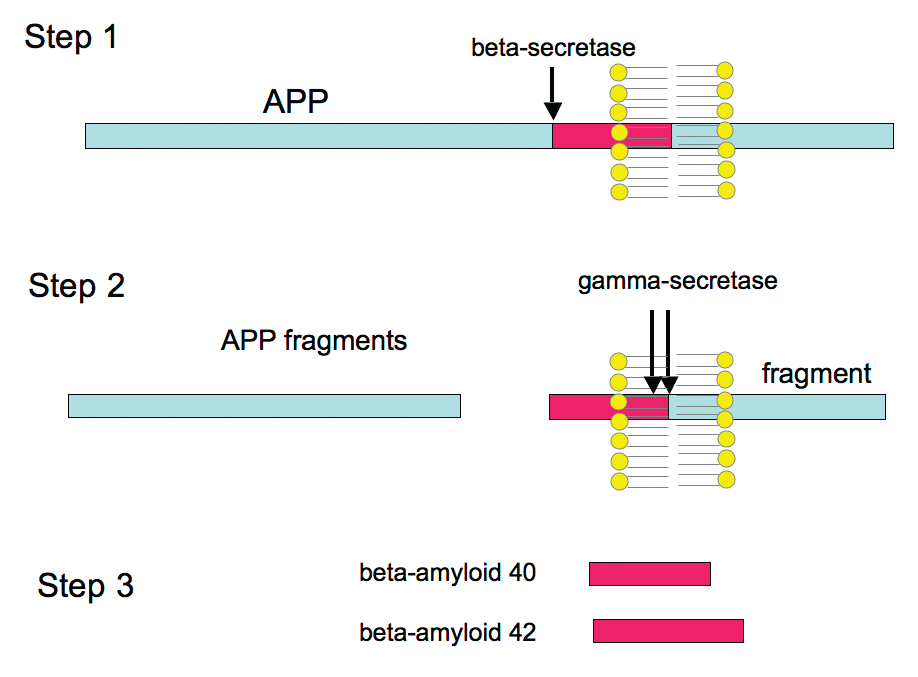December 10, 2010
By: www.ALZinfo.org
Beta-amyloid is believed to cause most of the degenerative brain changes underlying Alzheimer’s disease. Scientists at the Fisher Center for Alzheimer’s Research at The Rockefeller University have been pursing which types of beta-amyloid protein may be responsible for theses degenerative brain changes, as well as how each disrupts the transmission of nerve impulses in the brain. In recent years it has become clear that beta-amyloid exists in a variety of forms in the brain and that not all of its forms are equally toxic. For one thing, a longer form of beta-amyloid, designated amyloid beta 42, is known to be more toxic than the more common, shorter form, known as amyloid beta 40. The reason for this has to do with the tendency of beta-amyloid molecules to stick to each other, forming groups composed of two, three, four and even hundreds of individual beta-amyloid molecules (amyloid beta 42 is stickier). The largest of these groupings form the plaques found in the Alzheimer’s patient’s brain. Most importantly, is has been shown that the forms of beta-amyloid that are toxic, consist of groups rather than individual molecules.

Dr. Dennis Selkoe and his colleagues at Harvard University recently removed beta-amyloid from the brains of deceased Alzheimer’s patients. He and his colleagues then exposed animal models to preparations containing different size groupings of beta-amyloid derived from the human brains. The researchers observed that the “dimers” of beta-amyloid (those groupings consisting of just two molecules of beta-amyloid) prevented the models from learning simple tasks.
The researchers also exposed the animal models’ brain tissue to the beta-amyloid groupings and found that it disrupted the normal transmission of signals between brain cells. These fascinating results will have to be repeated by other laboratories if “dimers” are to be accepted as the primary cause of the symptoms of Alzheimer’s. Many scientists believe larger forms of beta-amyloid groupings will also be toxic and it is not yet certain which forms actually exist in the human brain. Nevertheless, the Harvard study is an important step forward.
These observations, and those of the Fisher Center for Alzheimer’s Research, are important because they suggest that scientists may be able to create drugs or treatments that inhibit formation of the specific, toxic beta-amyloid group(s). In addition to finding which groupings are toxic, the Fisher researchers are determining how the groupings work to disrupt brain cell communication. By answering this question, they can seek or develop treatments that prevent beta-amyloid from causing the damage to the brain that leads to Alzheimer’s.
Source: www.ALZinfo.org. Preserving Your Memory: The Magazine of Health and Hope; Fall 2008. Reviewed by William J. Netzer, Ph.D., Fisher Center for Alzheimer’s Research Foundation at The Rockefeller University.











